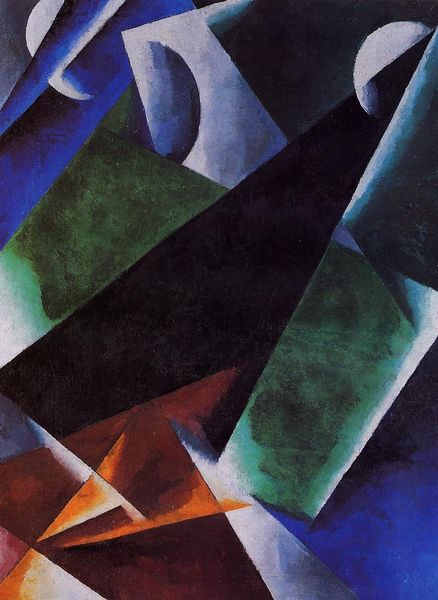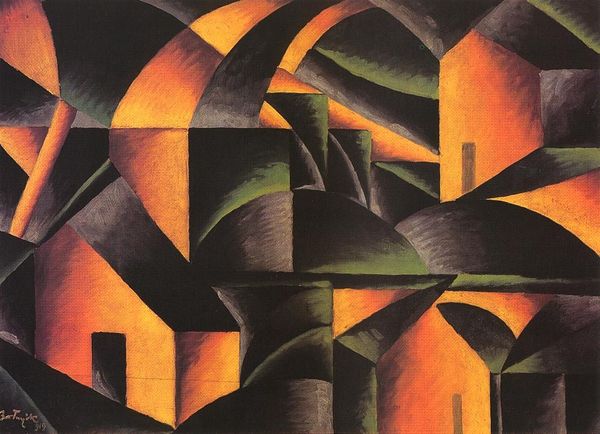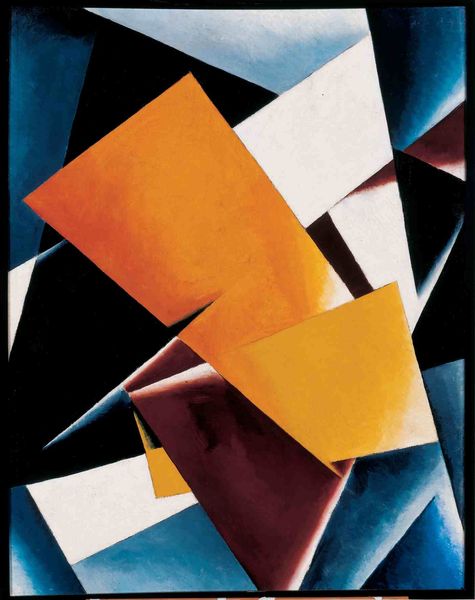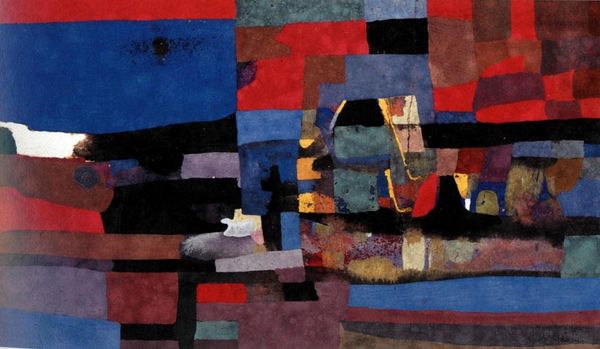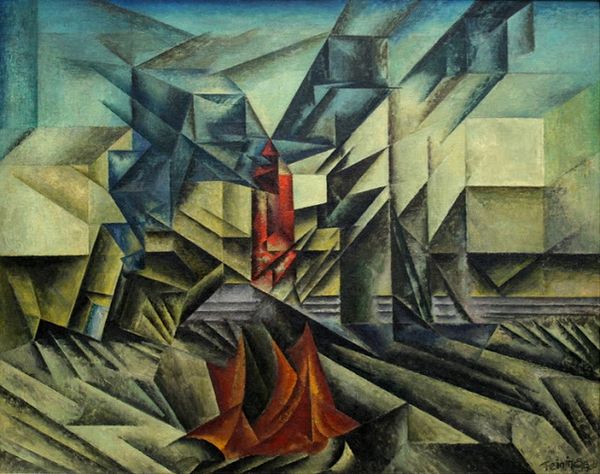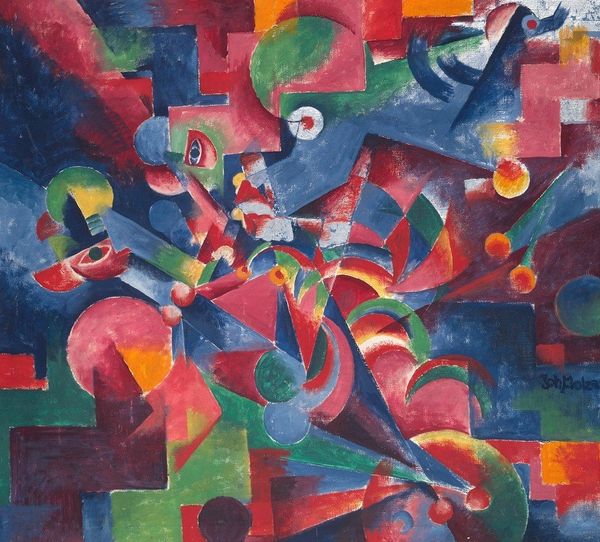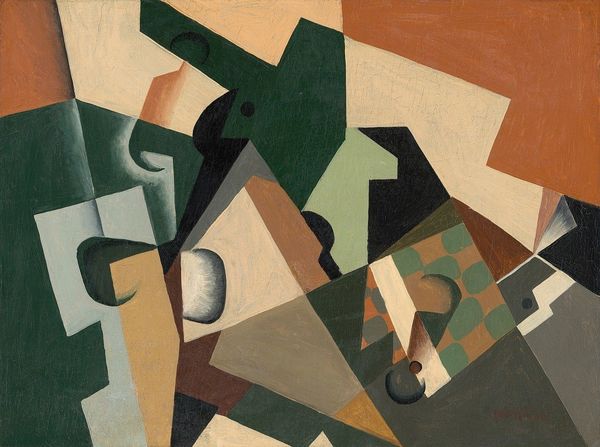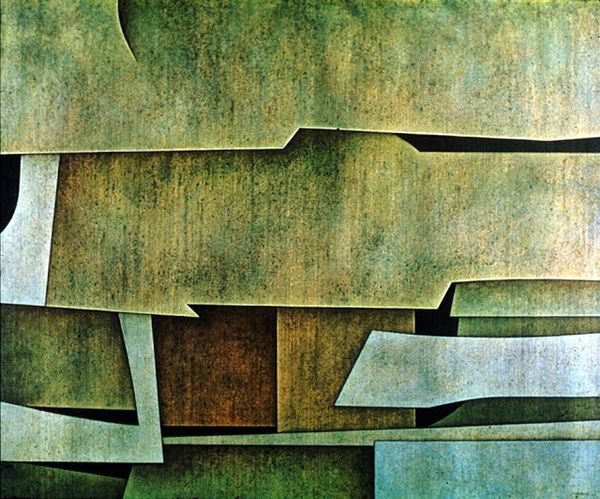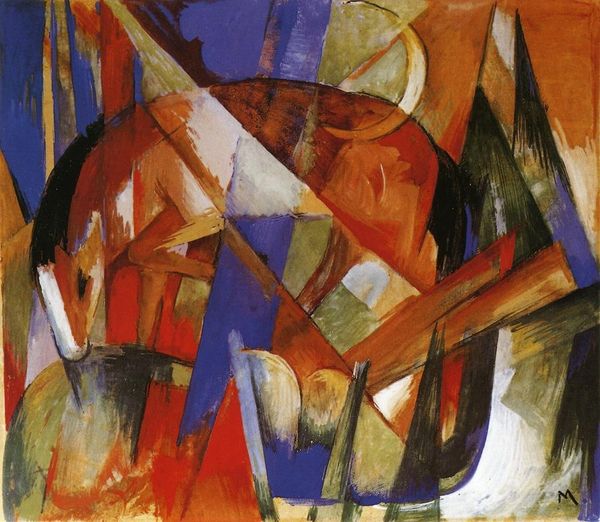
Dimensions: support: 603 x 816 mm
Copyright: © The estate of Arthur Segal | CC-BY-NC-ND 4.0 DEED, Photo: Tate
Curator: Arthur Segal, born in 1875, painted "Harbour on Bornholm". It's held in the Tate Collection, and I find it to be a rather striking composition. Editor: Indeed. My initial impression is one of fragmented stillness, like a memory viewed through fractured glass. The heavy horizontals and muted palette reinforce this feeling. Curator: Absolutely. Bornholm was a refuge for artists fleeing conflict. Segal himself had a fascinating, peripatetic life, dealing with exile and displacement. This division, this sense of unease, might reflect that. Editor: I see how this division might reflect Segal's personal experiences, but technically, the canvas itself is divided into four distinct quadrants, each presenting a slightly altered perspective of the harbor. Curator: I'd argue that the distorted perspective reflects his politics; he was a socialist deeply concerned with social harmony and justice and critical of bourgeoise society. Editor: Perhaps. It's intriguing how Segal uses color to unify these fragmented perspectives, though. The reds of the boats are echoed throughout the composition. Curator: I agree, and understanding the historical context allows us a better understanding of the visual techniques employed. Editor: And vice versa. Considering both the formal qualities and historical context allows for a more complete understanding of the artwork. Curator: A truly thought-provoking piece!
Comments
tate 6 months ago
⋮
http://www.tate.org.uk/art/artworks/segal-harbour-on-bornholm-t01243
Join the conversation
Join millions of artists and users on Artera today and experience the ultimate creative platform.
tate 6 months ago
⋮
The Romanian artist Arthur Segal was associated with Expressionism and with Dada before developing his personal style of which Harbour in Bornholm is a mature example. He had visited the island in the Baltic before the First World War, but this painting was based upon a photograph. Through the fragmented four-part structure, Segal sought to break with a single point of focus or compositional dominance. He remarked: ‘In nature everything is of equal importance and interest.’ This dynamism achieves a new sense of balance. Gallery label, November 2007
